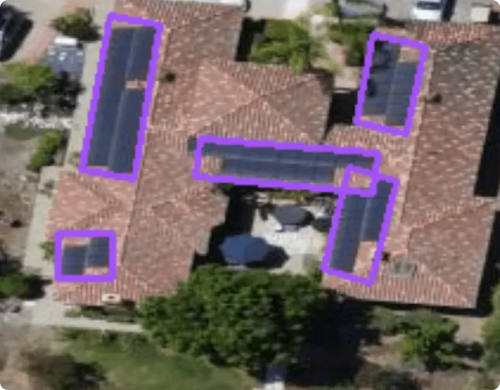Deeparts Bounding Box Annotation Project
Bounding box annotation project. To explain in simple terms, Logictive Solutions are provided with floorplans for buildings where we need to distinguish and annotate walls, pillars, doors, windows. Looking from a non-engineering background individual, this project still looks potential as it might help in the construction working process or to determine the internal structure of the building.

Services We Provided
Project Overview
Short summary of what the project was about.
AI model training for floorplan labeling.
Finding Four architectural structures (windows, doors, pillars, and walls) in a floorplan.
CVAT used as annotation tool.
Team members (annotators) working on the project while QAs are assigned according to the project need.

Approach and Process: Four Steps
The team project work approach involved four main steps:
Uploading Task
Uploading the annotation task on CVAT.
QA is responsible for uploading tasks on CVAT.
QA needs to update the task on progress reports.
Annotation
Annotation of the required architectural elements.
All regular team members need to work on their respective tasks according to the progress report.
QA Check
Quality Assurance check of the completed annotations.
QA is responsible to maintain quality and provide feedback when necessary.
QA needs to hold the task (If working on the task itself) and switch to QA when a team member completes a task.
Uploading Outcome
Uploading the final outcome to the client's database..
QA needs to verify if the progress report shows daily progress and is updated.
QA needs to calculate the remaining task with their respective number of floorplans completed and added annotation and create a report accordingly.
Initial Challenges Faced
Issues or obstacles that occurred during the project's initial stages.
Lack of Clarity
As the work continued, different instances were found that needed clients clarification. (Very first)
Meeting Deadline
There was no clarity on how much annotation is needed in a single task resulting in expecting the task to be complete sooner than expected. This resulted in missing deadlines in the initial stages of the project.
Tools Lagging
Low device performance capacity and low internet bandwidth caused the annotation tools to lag.
Challenge Mitigation Strategies
Process Improvements
A Q&A document was created where the team members would enter new instances found in the floorplan, and the client would later respond to them on how each of the new instances needs to be done.
As the project continued, the possible annotations were calculated by comparing different batches of tasks completed previously. This was calculated by finding the annotation ratios according to the number of floorplan. This calculation was proven to be much more effective and helped setting a more accurate and achievable deadline.
Technical Upgrades
We switched to better bandwidth connection and upgraded the laptops.

Project Outcomes and Results
100
Floorplans Annotated
Successfully annotated all the floorplans required for the project.
MET
Final Deadlines
The final deadlines were met successfully after implementing mitigation strategies..
Lessons Learned: Communication and Training
As the task had different use cases, open communication and proper training is essential.
Open Communication
Crucial for handling different use cases and ensuring consistency in annotation.
Proper Training
Necessary to prepare the team for the variety of instances found in the floorplans.
Future Improvements and Operational Efficiency
- Upgraded device and Bandwidth
As the tool starts lagging with increasing annotation, having better laptop and internet bandwidth was necessary to overcome/reduce tool lagging.
- Tasks assigned according to task size and device performance
Since bigger files were the one that lagged the most, those tasks were assigned to the one with the better device to reduce lagging and have better throughput.
- Break Frames for High Annotation Tasks
If there are multiple high annotation tasks, it will be better to break frames so multiple people can work separately with reduced possibility of lagging.
- Include Extra Time on Deadline
It is better to include extra time on deadline as the deadline mostly did not meet due to the unpredictable nature of the task.